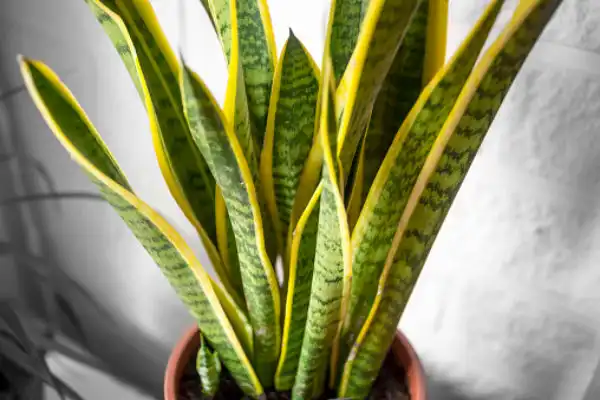
There are a plethora of Snake Plant Varieties, each with its own charm. In this article, we’ll explore the diverse varieties of snake plants and their distinct characteristics. The snake plant, scientifically known as Sansevieria, is a popular household plant known for its hardiness and unique architectural appearance. Not only does it add a touch of nature to any interior space, but it also boasts impressive air-purifying qualities. Native to West Africa, this plant has captured the hearts of plant enthusiasts worldwide.
It’s no wonder snake plants are amongst the most popular beginner-friendly houseplants. These popular houseplants tend to be drought-tolerant and can handle various light conditions, and there are plenty of unique varieties to choose from. Plus, their architectural foliage makes them popular as a modern interior design accent (although they rarely flower when grown indoors).
There are over seventy species in the genus formerly known as Sansevieria and many more cultivars. Now part of the Dracaena genus, you might see the plants being referred to using either of these botanical names.
Read: Exploring the Myth and Magic Behind Wandering Jew Plants
The species range from desert-loving succulents to humidity-loving tropical plants. However, most are adaptable to a wide range of growing conditions and can typically handle low light (making them popular bathroom plants). However, bright but indirect light is best to bring out the foliage patternation in variegated species. When it comes to watering snake plants, they don’t need irrigating all that frequently—in fact, overwatering is the most frequent killer of these species.
Are you looking to add to your indoor jungle collection? These 35 types of snake plants are sure to offer some inspiration.
Dracaena Angolensi
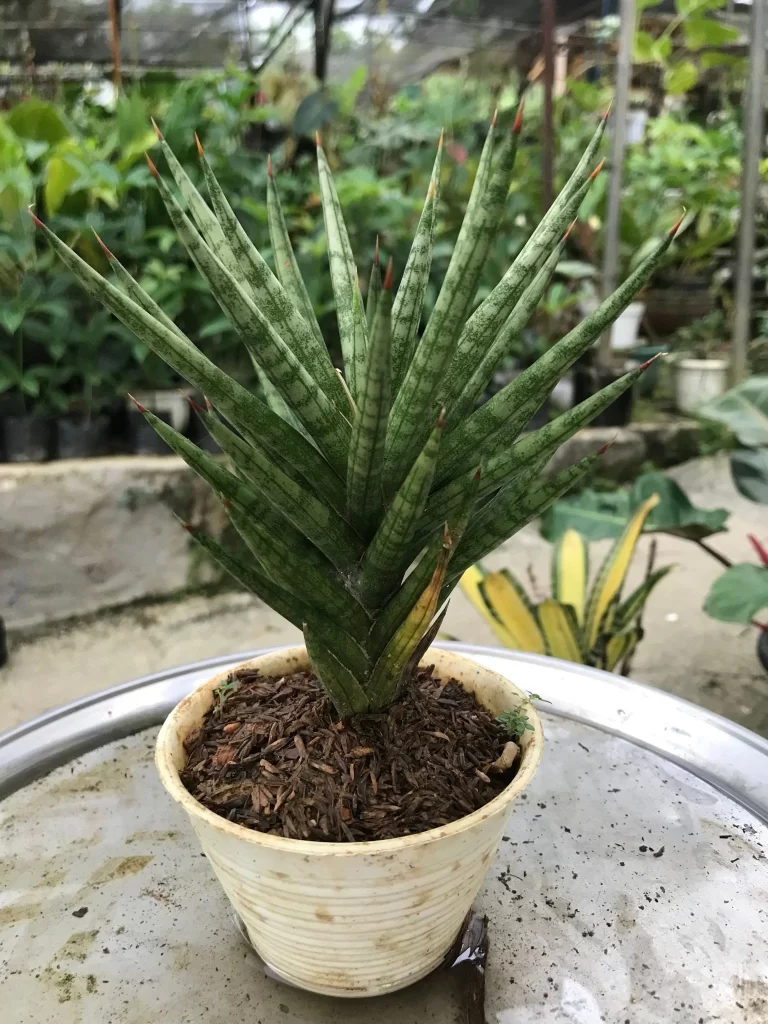
The African spear plant is a slow-growing succulent prized for its long, round stemless leaves which arch outward from its central crown. There’s also a ‘straight’ cultivar, whose leaves stand upright to attention.
- Synonym: Sansevieria cylindrica
- Size: Up to 6 feet tall
- Foliage color: Gray-green, subtly striped
- Foliage shape: Stiff, cylindrical, long
Dracaena Trifasciata ‘Laurentii’

When you think of snake plants, it’s likely the easily recognizable ‘Laurentii’ that comes to mind. Sometimes called the variegated snake plant or striped mother-in-law’s tongue, this popular, hardy species stands out for its striking foliage patternation. The sword-shaped foliage of snake plants suits Feng Shui fans as they are said to cut through negative energy.
- Synonym: Sansevieria laurentii
- Size: Up to 4 feet tall
- Foliage color: Dark green with banded zigzags of lighter green and yellow edges
- Foliage shape: Flat, sword-shaped
Read: Silver Sword Philodendron – Propagation, Care, and Benefits
Dracaena trifasciata ‘Twisted Sister’

If you’re looking for a compact snake plant to fit on a small shelf, why not try the dwarf cultivar Dracaena trifasciata ‘Twisted Sister’? It’s another species with a bird’s nest, and twisting leaf growth habit.
- Synonym: Sansevieria ‘Twisted Sister’
- Size: Up to 15 inches tall
- Foliage color: Yellow-gold and green variegation
- Foliage shape: Curvy, blunt edges
Dracaena Trifasciata ‘Bantel’s Sensation’

The slender, tall, variegated foliage on this award-winning species adds a touch of elegance to any room. The white streaks on the leaves are why it is sometimes known as the white snake plant.
- Synonym: Sansevieria Bantel’s Sensation
- Size: Up to 3 feet tall
- Foliage color: Dark green with white vertical stripes
- Foliage shape: Flat, pointy, smooth
Dracaena Pearsonii
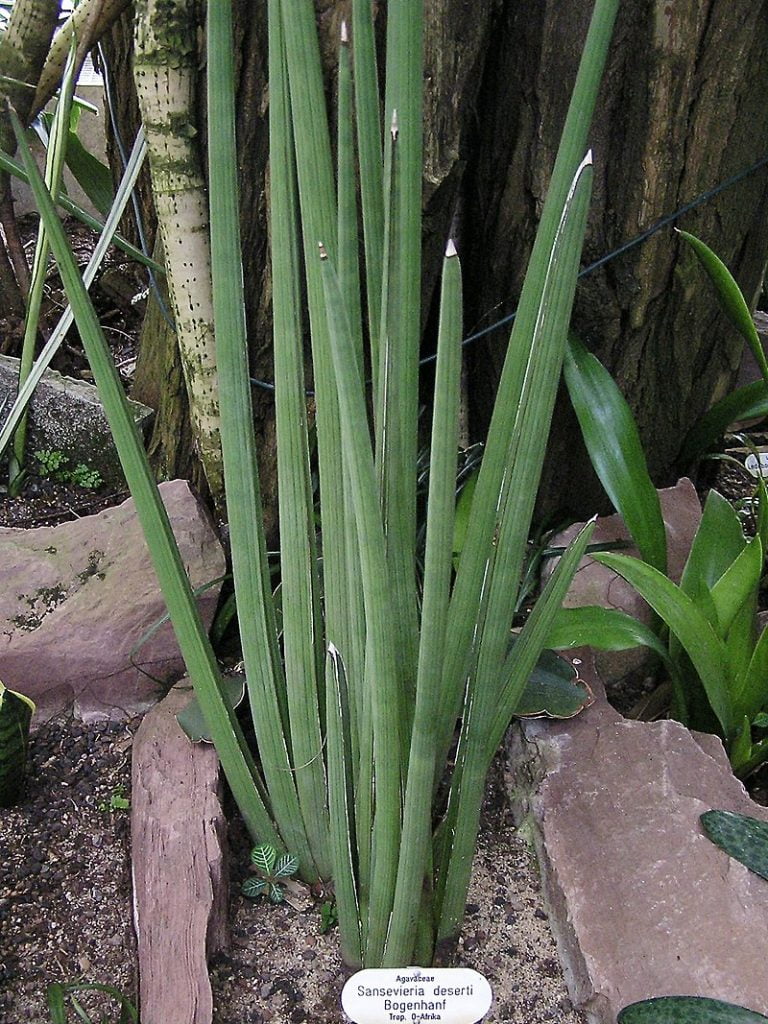
This rare beauty, sometimes known as rhinograss, is hard to come by. They’ll reward you with an attractive clump of vertical leaves if you’re lucky enough to snag one.
- Synonyms: Sansevieria pearsonii or Sansevieria deserti
- Size: Up to 4 feet tall
- Foliage color: Dark green
- Foliage shape: Long, erect, ribbed
Read: Passiflora Caerulea: Unveiling the Allure of Blue Passionflowers
Dracaena Trifasciata ‘Black Gold’
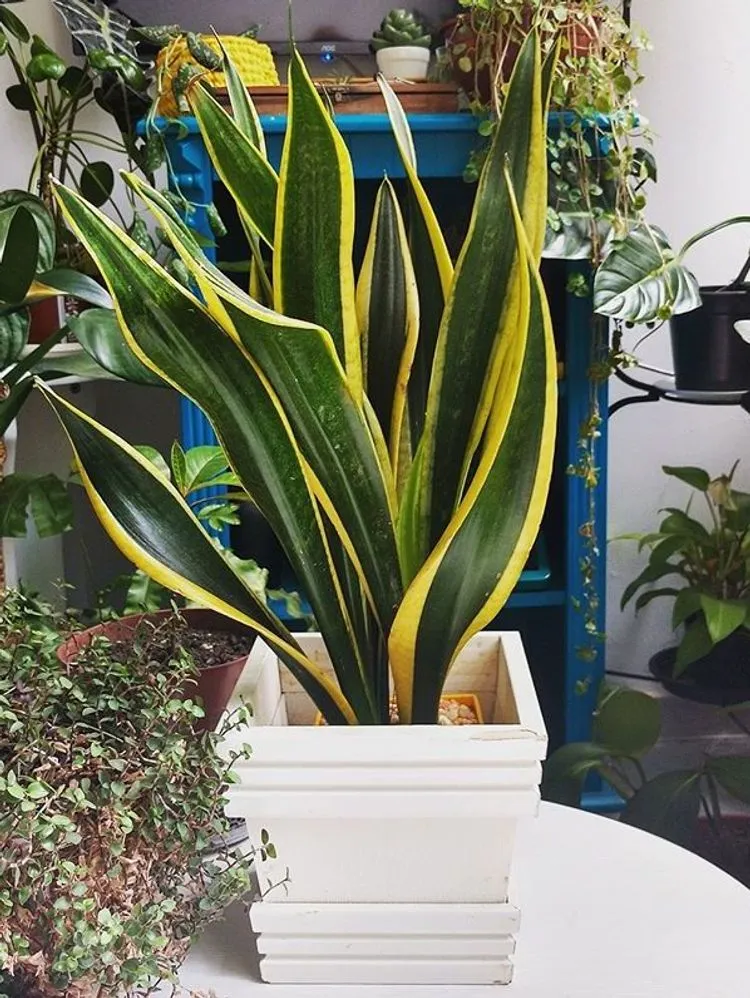
‘Black Gold’ is another widely available cultivar that collectors love because of the bright gold edging, which contrasts sharply with the dark green on the foliage. While too much direct sun will scorch the leaves, giving this plant enough bright but indirect light ensures the colors on the foliage stay vibrant.
- Synonym: Sansevieria trifasciata ‘Black Gold’
- Size: Up to 3 feet tall
- Foliage color: Dark green, bright gold chartreuse
- Foliage shape: Long, flat, sword-shaped
Dracaena Trifasciata ‘Moonshine’
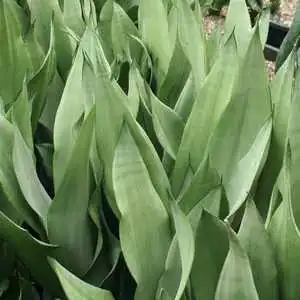
Sometimes referred to as the silver snake plant, this cultivar has stunning broad silvery-gray foliage (which is almost white when new) and has a similar growth habit to the ‘Futura Robusta’ cultivar. To make the most of the colors, you’ll need to keep this plant in a bright but indirect light position. In shadier spots, the light leaves turn dark pretty rapidly.
- Synonym: Sansevieria trifasciata ‘Moonshine’
- Size: Up to 2 feet tall
- Foliage color: Silvery green with lighter green blotches and striations and narrow darker green margins
- Foliage shape: Upright inverted triangular
Dracaena Pethera

The star sansevieria is very slow-growing, so you’ll need plenty of patience waiting for it to reach maturity. Unlike many snake plants, with their upright habit, this species’ heavy, tough leaves start to droop to the ground as it matures.
- Synonym: Sansevieria kirkii
- Size: Up to 3 feet tall
- Foliage color: Dark green with wavy reddish margins with white mottling on the mature plants
- Foliage shape: Flat, sword-shaped
Read: Cebu Blue Pothos: Exploring Its Enchanting Allure!
Dracaena Patens

If you’re looking for a less formal snake plant that doesn’t have the distinctive upright growth habit, this is the species for you—the thick, stiff foliage fans out in random directions.
- Synonym: Sansevieria patens
- Size: Up to 3 feet tall
- Foliage color: Bright green (turning bluish-green in maturity) with light green horizontal bands and white tips
- Foliage shape: Curls inward to create a deep groove
Dracaena Hanningtonii

It’s no wonder this plant is sometimes called the sword sansevieria. It has thick, fibrous, pointy leaves that fan out attractively. The blueish tone of the grooved green leaves also means the plant is referred to as the blue sansevieria (although this shade fades as the plant matures).
While it is a larger snake plant species, it takes many years to reach its mature size.
The thick, pointy, fibrous leaves and their juice have been used as a natural antiseptic.
- Synonym: Sansevieria ehrenbergii
- Size: Up to 5 feet tall
- Foliage color: Bluish-green with reddish-brown and white margins
- Foliage shape: Wide, sharp-ended
Read: Jade Plant Types: Exploring a World of Green Varieties!
Dracaena Zeylanica

Similar to the popular Sansevieria Trifasciata, this species has foliage that is almost olive in shade and features twisty, horizontal light green stripes.
- Synonym: Sansevieria zeylanica
- Size: Up to 3 feet tall
- Foliage color: Dark green with lighter horizontal stripes
- Foliage shape: Upright, long, sword-shaped.
Dracaena Parva

While it’s a rare event for this snake plant to flower indoors, it gets its common name of the Kenya Hyacinth from the lovely fragrance of its flowers. And, if conditions are perfect, you might get lucky, as it does flower more regularly than many species in this genus.
Young plants have pale green horizontal bands on their foliage, but, even when the leaves move to a solid green when mature, their narrow, tapering shape still looks attractive as they fan out like a fountain. Look out for the variegated cultivar as this sports unique yellow-white stripes along the foliage.
- Synonym: Sansevieria parva
- Size: Up to 1.5 feet tall
- Foliage color: Bright green with pale green bands when young. Turn a plain deep green when mature.
- Foliage shape: Narrow, lance-shaped
Read: Baltic Blue Pothos: Captivating Elegance in Greenery!
Dracaena Ballyi

This small species has thin tubular foliage and a compact growth habit that gives it its common name the dwarf snake plant. Plus, there’s an even smaller cultivar called ‘Minnie’ that’s perfect for fitting in the tiniest of spaces.
- Synonym: Sansevieria ballyi
- Size: Up to 6 inches tall
- Foliage color: Green with light-green bands and reddish-brown tips
- Foliage shape: Thin, cylindrical, rough, inward-curving
Dracaena Bacularis

With its tall tubular leaves, this plant is often confused with the more common Dracaena angolensi , but the leaves on Dracaena bacularis are thinner.
- Synonym: Sansevieria bacularis
- Size: Up to 6 feet
- Foliage color: Dark green with gray-green horizontal bands
- Foliage shape: Tall, cylindrical, rough
Dracaena Canaliculata

Another snake plant with cylindrical leaves, you won’t confuse this with the Sansevieria cylindrica because the foliage grows individually rather than in clustering rosettes and it has distinctive grooves on the surface. This is a rare houseplant species, but if you’re lucky enough to find one, look out for the variegated and dwarf varieties which are also available.
- Synonym: Sansevieria canaliculata
- Size: Up to 3 feet tall
- Foliage color: Dark green with white tips
- Foliage shape: Cylindrical, usually upright but can curve slightly, grooves along the length, narrow tips
Dracaena Fernwood
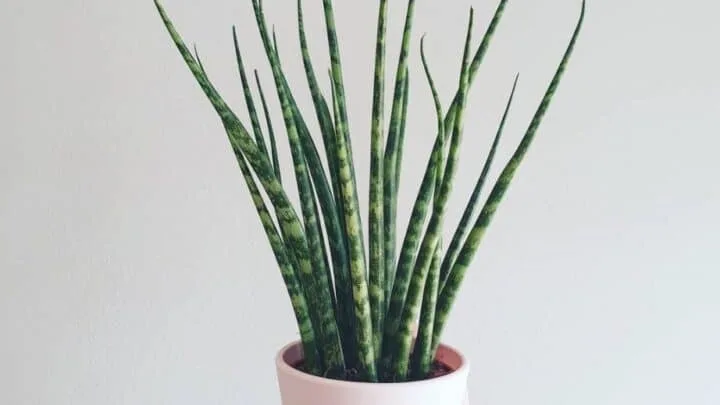
This snake plant is a hybrid of Dracaena parva and Dracaena suffruticosa. It’s sometimes confused with Dracaena bacularis, but the mature plant has denser but shorter foliage. You might also find it misnamed Dracaena angolensis, but the fernwood has leaves with obvious vertical grooves.
- Synonym: Sansevieria fernwood
- Size: Up to 3 feet tall
- Foliage color: Dark green with light green horizontal bands
- Foliage shape: Tall, thin, arching, and with a dense growing habit
Dracaena Angolensis ‘Starfish’

One of the most unique-looking snake plants, this small cultivar has fat, stubby leaves that spread apart as it grows, developing a fan-shaped, striking starfish-shaped appearance.
- Synonym: Sansevieria Cylindrica var. Patula
- Size: Up to 1 foot tall
- Foliage color: Dark green with light grayish-green horizontal bands
- Foliage shape: Thick, tubular, firm
Read: Water Lily: Dive into the Allure of Aquatic Beauty!
Dracaena Trifasciata ‘Silver Queen’

This medium-sized Dracaena trifasciata cultivar stands out for the silver hues of its foliage.
- Synonym: Sansevieria trifasciata ‘Silver Queen’
- Size: Up to 3 feet tall
- Foliage color: Silver-green with light green horizontal bands
- Foliage shape: Tall, flat, sword-shaped,
Dracaena pinguicula

The stubby, thick leaves of this rare succulent species mean it resembles an agave plant. Its unusual growth habit is the reason for the common name of walking sansevieria.
- Synonym: Sansevieria pinguicula
- Size: Up to 1 foot tall
- Foliage color: Greenish-blue with reddish-brown margins and tips
- Foliage shape: Sharp-spined, pointy, thick
Dracaena masoniana

Commonly known as the whale fin snake plant because of the unusually wide foliage, this species also has striking splotchy patternation. It’s a rare beauty that’s sure to stand out in your indoor plant collection—if you can manage to get your hands on one.
- Synonym: Sansevieria masoniana
- Size: Up to 4 feet tall
- Foliage color: Bright green, covered with light green blotches and reddish-brown to purple margins
- Foliage shape: Wide, thick, upright
Read: Christmas Cactus Propagation: Your Joyful Guide
Sansevieria Francisii

A unique snake plant featuring densely packed, cross-branding rows of foliage. Unfortunately, this spiky sensation isn’t widely available, so you’ll likely have to source from a specialist supplier.
- Synonym: Sansevieria francisii
- Size: Up to 2 feet tall
- Foliage color: Green with grayish-green horizontal stripes and brownish-pointy tips
- Foliage shape: Short, tubular, stiff
Dracaena Concinna

If you give this rare snake plant species enough bright but indirect light, you’ll be rewarded with its foliage developing into a unique spoon-shaped form.
- Synonym: Sansevieria concinna
- Size: Up to 1.5 feet tall
- Foliage color: Dark green
- Foliage shape: Oval, spoon-shaped
Dracaena Aubrytiana
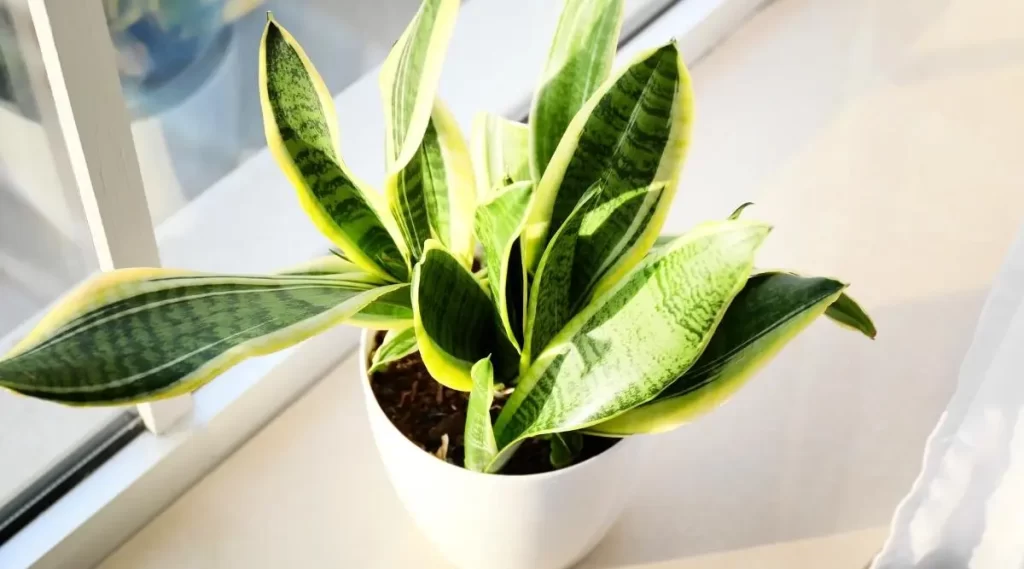
Closely related to Dracaena pethera, this snake plant species is commonly known as the father-in-law’s tongue. The marbling effect on the glossy foliage is an exceptional feature.
- Synonym: Sansevieria aubrytiana
- Size: Up to 2 feet tall
- Foliage color: Dark green with white splotches
- Foliage shape: Flat, sword-shaped
Dracaena Suffruticosa

Sometimes referred to as bow strap hemp, this snake plant species has a central groove that comes halfway up the leaf. The longleaf becomes thin and cylindrical from there, extending to a spiky tip.
- Synonym: Sansevieria suffruticosa
- Size: Up to 3 feet tall
- Foliage color: Dark green with pale lighter green bands and white tips
- Foliage shape: Thick, slightly arching, pointy tips
Read: Propagate Pothos Like a Pro: Your Essential Guide
Dracaena Stuckyi
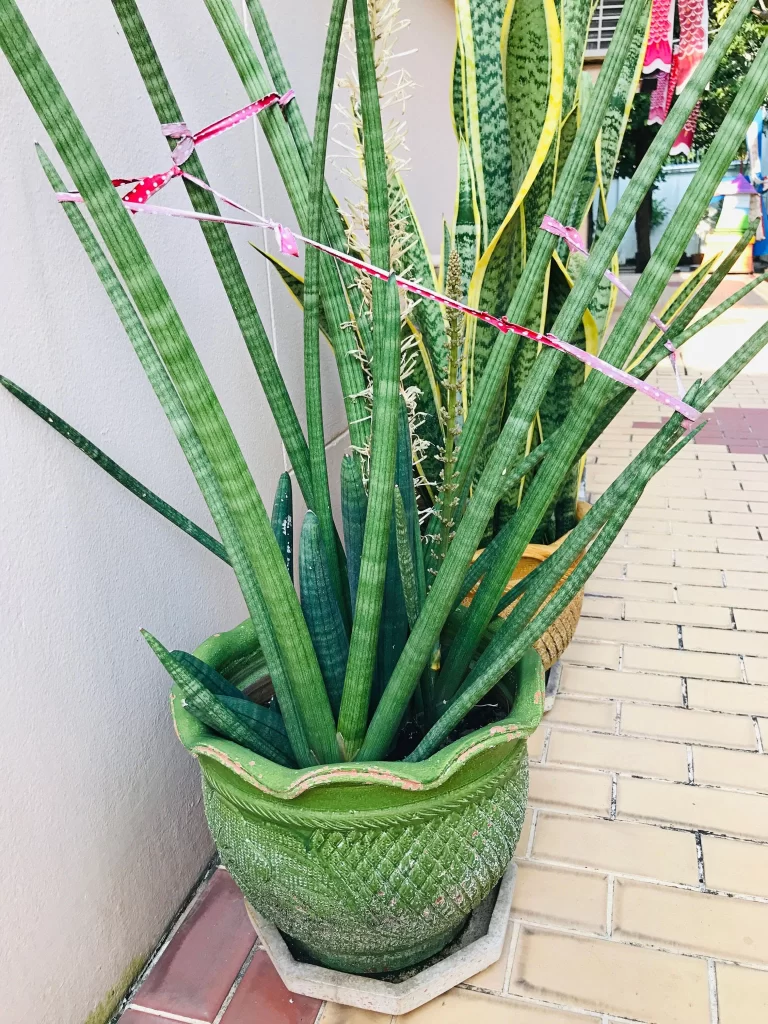
When mature, this tall species makes for a great specimen floor plant. It’s also interesting to watch the development of this plant which changes color and shape as it matures.
The juvenile plant features flat green leaves that have horizontal dark green stripes and they fall in a fountain shape. Once the plant reaches maturity (this can take up to six years), the leaves become thinner, longer, and cylindrical with pointy tips. The foliage turns a paler green, loses the striping, and develop vertical channels.
- Synonym: Sansevieria Stuckyi
- Size: Up to 6 feet tall
- Foliage color: Pale green when mature
- Foliage shape: Upright with circular crosssections when mature
Dracaena Trifasciata ‘Futura Robusta’
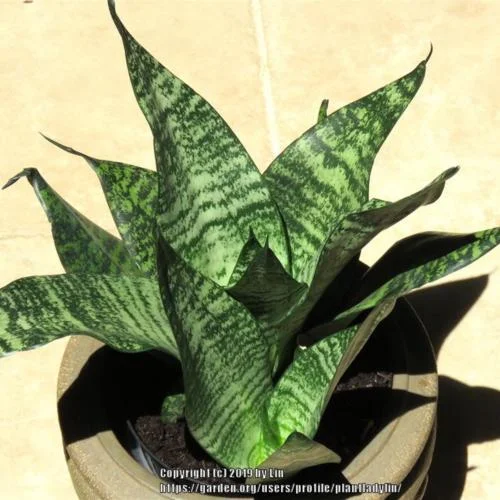
This semi-compact snake plant cultivar’s matte dark green foliage has eye-catching silvery-green blotches.
- Synonym: Sansevieria trifasciata ‘Futura Robusta’
- Size: Up to 24 inches
- Foliage color: Dark green with lighter green blotches and striations
- Foliage shape: Inverted triangular
Dracaena Trifasciata ‘Black Robusta’

Not as fast-growing or vigorous as the likes of the ‘Black Jack’ cultivar, you can typically expect 3 to 5 leaves on your ‘Black Robusta’ plant. It stands out for its very dark green leaves with attractive silver patternation.
- Synonym: Sansevieria trifasciata ‘Black Robusta’
- Size: Up to 16 inches tall
- Foliage color: Dark green with mottled silver stripes
- Foliage shape: Inverted triangle
Dracaena Trifasciata ‘Golden Flame’

Another dinky dracaena, the ‘Gold’ or ‘Golden Flame’ cultivar sports gray-green foliage that has yellow-gold patternation that looks similar to sparks from a fire.
- Synonym: Sansevieria trifasciata ‘Golden Flame’
- Size: Up to 18 inches tall
- Foliage color: Gray-green (turning dark green with age) and yellow-gold stripes
- Foliage shape: Upright, inverted triangle
Read: How to Propagate Wandering Jew Plant
Dracaena Trifasciata ‘Whitney’

This dwarf snake plant cultivar has an average of four to five leaves per plant that form in a rosette shape. It’s the irregular variegation on the wide margins that this variety is known for.
- Synonym: Sansevieria trifasciata ‘Whitney’
- Size: Up to 16 inches tall
- Foliage color: Dark green with pale green and dark green variegation on the margins
- Foliage shape: Upright, inverted triangle
Dracaena Trifasciata ‘Black Jack’
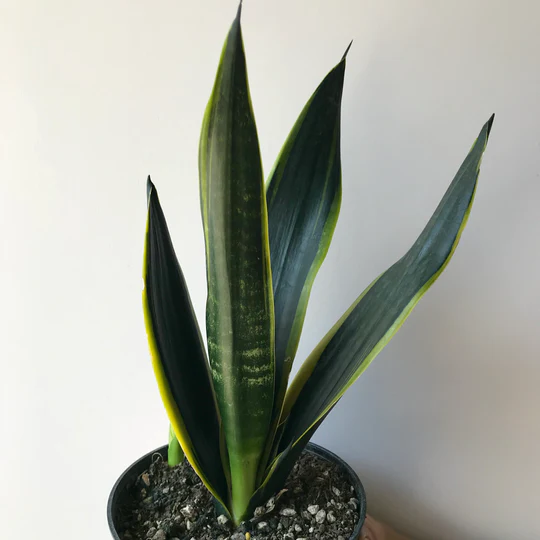
A recently introduced cultivar, ‘Black Jack’ is a compact snake plant with a vigorous growth habit. The ‘Black Gold Superba’ is its larger parent variety. Expect around seven to 10 leaves to form like a rosette on this dinky specimen.
- Synonym: Sansevieria trifasciata ‘Black Jack’
- Size: Up to 15 inches tall
- Foliage color: Dark green with bright yellow-green margins
- Foliage shape: Wide, inverted triangle
Dracaena Trifasciata ‘Futura Superba’
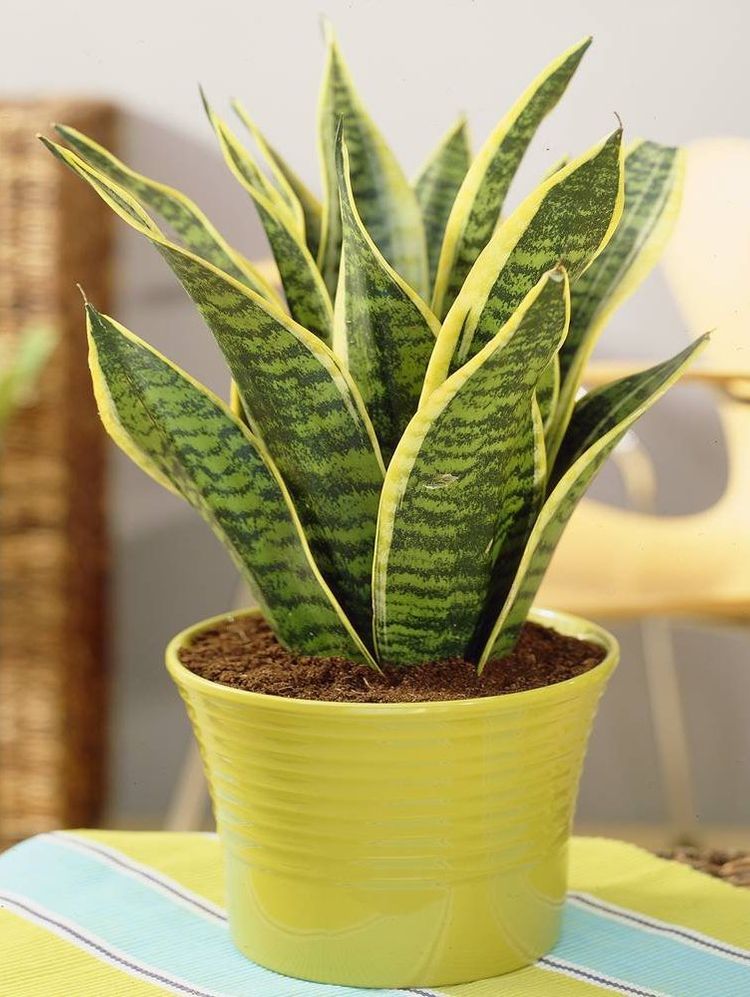
This compact snake plant cultivar tends to have three to five leaves per plant and the wide leaves grow with an upright habit in a rosette, inverted triangle shape.
- Synonym: Sansevieria trifasciata ‘Futura Superba’
- Size: Up to 15 inches tall
- Foliage color: Greyish-dark green with a substantial yellow margin
- Foliage shape: Straight and becomes reflexive with age
Dracaena Trifasciata ‘Laurentii’ Black Limon

‘Black Limon’ is a cultivar of the popular ‘Laurentii’ variety. The dark green leaves feature bright yellow margins, and there are typically three to five per plant. This cultivar is particularly known for its drought-tolerance.
- Synonym: Sansevieria laurentii ‘Black Limon’
- Size: Up to 3 feet tall
- Foliage color: Dark green with yellow edges
- Foliage shape: Upright, flat, long, sword-shaped
Dracaena Trifasciata Hahnii ‘Jade Pagoda’

This dwarf variegated snake plant cultivar has smooth, deeply colored foliage with stand-out wavy yellow margins. It might be small, but its striking variegation makes a big impact.
- Synonym: Sansevieria Jade Pagoda or Sansevieria Hahnii Jade Marginata
- Size: Up to 10 inches tall
- Foliage color: Dark green with irregular yellow margins
- Foliage shape: Broad, lance-shaped, flat, thick
Dracaena Trifasciata ‘Metallica’

The fine gray vertical lines that run up the long leaves of this rare, slow-growing plant make it unique.
- Synonym: Sansevieria trifasciata ‘Metallica’
- Size: Up to 3 feet tall
- Foliage color: Green with a distinct metallic silver hue, gray vertical bands and light green horizontal bands
- Foliage shape: Long, sword-shaped, stiff
Take good care of your snake plants
There is not much of a learning curve involved in taking care of snake plants of any sort. They need indirect light to grow, however they are able to withstand either low light or direct sunshine. Because they need so little watering, they are ideal for those who don’t have a natural talent for taking care of plants. A typical error is overwatering, so make sure the soil is completely dry in between each watering session. In addition to this, they can survive in a wide range of temperatures, but they like warmer environments.
The Numerous Advantages That Come With Owning a Snake Plant
In addition to the aesthetic value they provide, snake plants provide a number of other advantages, including the following:
• Snake plants were shown to be one of the most effective air-cleaning plants in a study conducted by NASA and published in the journal Clean Air. They have the ability to cleanse the air of pollutants such as formaldehyde and benzene.
• Snake plants, unlike most other types of plants, release oxygen into the air at night, making them an ideal choice for decorating bedrooms.
• Requires Little Care Because of the ease with which these plants may be maintained, they are an excellent choice for those who are new to caring for plants or who have hectic schedules.
Read: Snake Plant Benefits: A Green Oasis for Health and Wellness
The final word
Both inexperienced gardeners and seasoned professionals will find that the versatility and hardiness of the snake plant make it an unrivaled option for their plant collection. There is a range of snake plant available for you to choose from whether you want a big statement piece or a subtle touch of green in your space. Their additional health advantages are the icing on the cake, making them not only an aesthetic treat but also a boon for the places in which they are found, particularly indoors.



